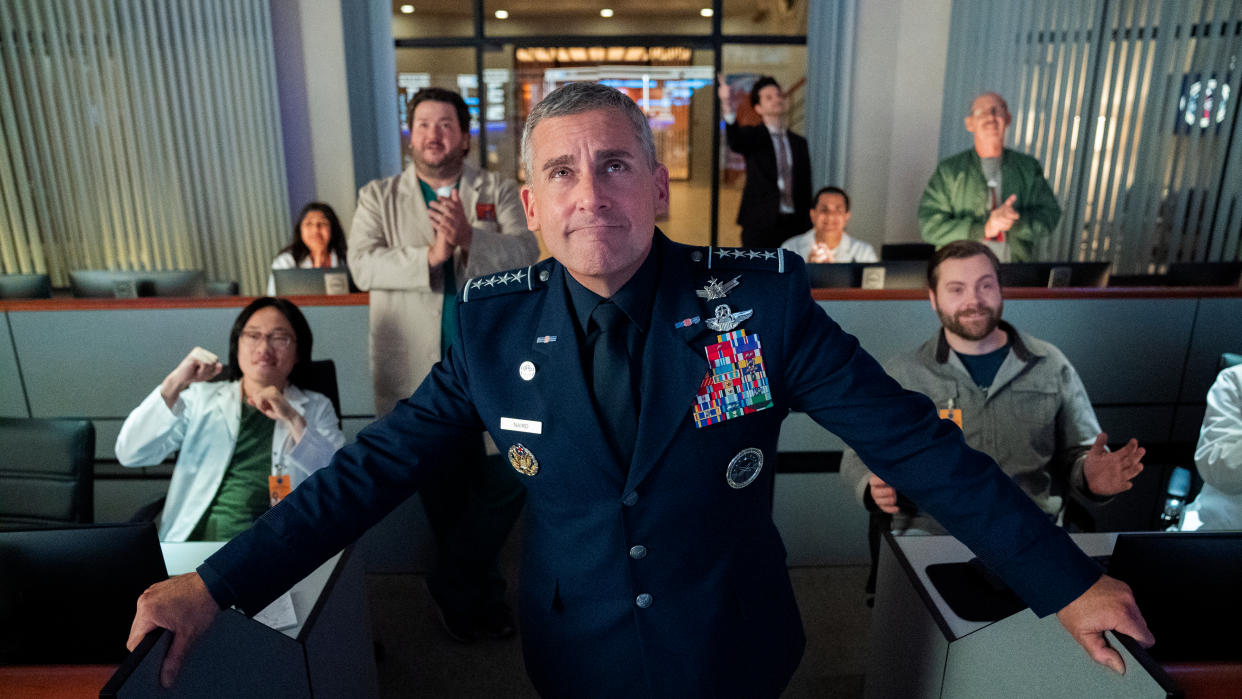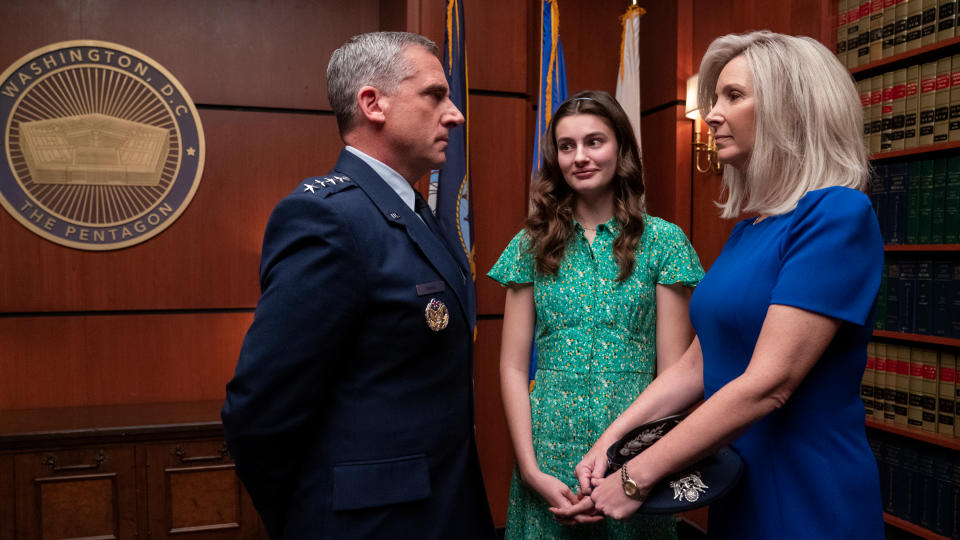'Space Force': Is the new Netflix series based on reality?

Netflix’s new comedy series Space Force debuts on the streaming platform this week, reuniting leading man Steve Carell with Greg Daniels, who created the Carell-starring, American version of The Office. The show depicts a group of scientists and military men — led by Carell’s General Mark Naird — as they establish the United States Space Force in an attempt to achieve the goal of getting “boots on the moon”.
It sounds like a typically outlandish sci-fi premise and one ripe for satire, with the unseen “POTUS” a thinly-veiled caricature of Donald Trump, prone to communicating via rage-inflected “tweet storms” and aggressive text messages.
Read more: James Gray on realistic space travel in Ad Astra
However, far from the world of science fiction, Space Force was born out of science fact. Daniels and Carell were looking for a show to do together when Carell suggested doing something based around the United States Space Force. The department had been discussed by Donald Trump in 2018 — provoking the original idea for the show — and officially moved forward in February 2019.

Netflix moved quickly on the project, ordering a 10-episode first season in January 2019, with shooting taking place between September 2019 and January 2020. When Lisa Kudrow signed on to play Naird’s wife, Maggie, she didn’t even know that Space Force existed in the real world.
In December 2019, President Trump officially signed the Space Force into law as the sixth independent armed service in the US military. Experienced Air Force General John "Jay" Raymond was given the very sci-fi-sounding job title Chief of Space Operations, borrowed for Carell’s character in the show. General Raymond even spoke out to offer Carell advice, mainly based on his haircut.
Read more: 10 ways movies get space science wrong
Both the real organisation and the fictional one at the heart of Space Force have responsibility for readying the USA for new forms of warfare in space, as well as ensuring American astronauts return to the moon. In the real world, Space Force has been tasked with getting forces to the moon by 2024. A proposed budget unveiled in February requested a massive $15bn (£12bn) to increase the size of the Space Force from a small unit similar to that seen in the show — there are currently 88 Space Force staff on active duty — to a 10,000-strong organisation.
Naturally, Space Force has to accelerate some of the storytelling for dramatic purposes, but the core role of Space Force is the same on both sides of the fact-fiction divide.

The aforementioned POTUS is also far from the only real world figure skewered by Carell and Daniels in Space Force. Naird’s fast-talking communications specialist, played by Sonic the Hedgehog star Ben Schwartz, is called Tony Scarapiducci — an obvious nod to Trump’s former comms chief Anthony Scaramucci — and Ginger Gonzaga’s no-nonsense politician Anabela Ysidro-Campos is transparently modelled on the divisive Alexandria Ocasio-Cortez.
Read more: Carell discusses the origins of Space Force
Space Force has landed with mixed reviews — 43% approval on Rotten Tomatoes at the time of writing — ahead of its debut on the streaming service. Some reviews, such as in New Scientist, have pointed out that part of the problem is that the satire it depicts can never be as ridiculous as reality.
It’s an odd problem for a sci-fi show to have, but Space Force might just be a little too real.
Space Force: Season One is streaming on Netflix from 29 May.

 Yahoo Movies
Yahoo Movies 
